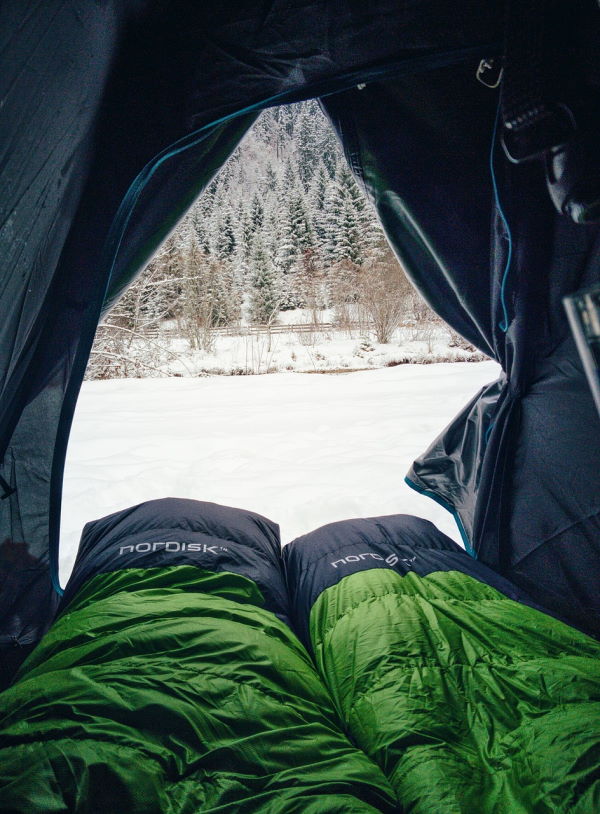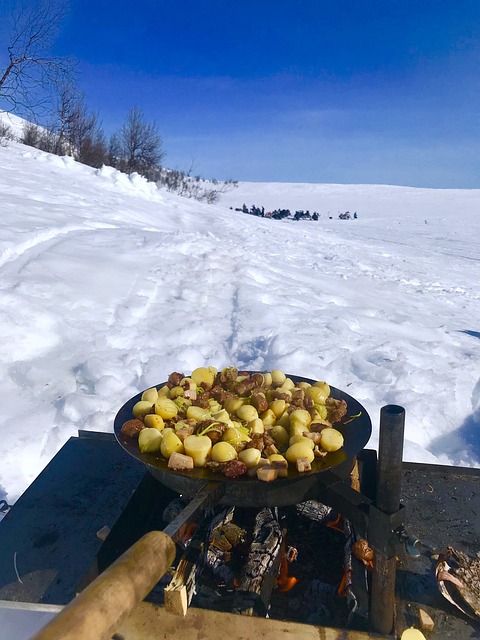As much as camping is mainly a summer activity, you can still enjoy this outdoor activity during winter. In fact, winter camping comes with numerous benefits. For instance, you will avoid the crowds, since most people go camping during the summer. Apart from that, there are fewer bugs to disrupt your adventure, since most bugs don’t thrive during the cold weather. However, winter camping also presents a unique set of challenges, mainly due to cold and wet conditions. If you are planning to go camping during the winter, here are some tips that will help you to enjoy a successful trip.
Prepare Adequately
Proper preparation is key, especially when it comes to winter camping. First, make sure you gather as much information about the area as possible. Check trail conditions, available emergency services, support businesses as well as how long it would take for search and rescue teams to locate you. You also need to check avalanche forecasts for the area you intend to visit. Also, you should ensure that your plans are flexible. For instance, if you had planned to go for the trip on a certain date and the weather has deteriorated on that particular day, it will be wise to either postpone your trip or even choose another campsite that has friendlier weather. You should also make sure that you are in great mental and physical shape, prior to your trip. It’s not advisable to go for winter camping if you have a serious medical condition. There is a high chance that such a condition might deteriorate, due to the extreme cold experienced during winter.
Select Your Campsite Wisely
As noted earlier, winter camping presents a unique set of challenges, which you might not experience during summer. And that’s why it’s important to choose your campsite carefully. First, ensure that the area where you intend to pitch tend has natural wind protection. If there is no wind shelter, then you can easily build one using snow. You can also dig a hole in the snow to minimize wind impact. Also, it should be free from the possibility of avalanches and falling branches or trees. Your campsite should have a good supply of potable water. And once you’ve arrived at your campsite, you should first clear all debris, including the snow. You also need to flatten it out using your boots or tools, so that you can have a comfortable sleeping experience. Don’t wait until later to clear away the snow. If it melts and refreezes, it will be extremely hard to move.
Go With Friends
While spending time alone in the wilderness sounds like a great idea, it’s not advisable to do it during winter. Therefore, make sure you bring along a friend or two. Your friends should be experienced winter campers. Camping in sub-zero temperatures will be highly demanding, both mentally and physically. And that’s why you need an extra set of hands. Also, someone at home should know where you will be camping, the routes you will follow as well as when you expect to be back home. In short, they should have your entire camping itinerary. In case something goes wrong, it will be easier to locate you as opposed to a situation when no one knows where you are.
Layer Up
Keeping dry and warm is key to a comfortable winter camping trip. And that’s why you need to layer up. You need to wear layers that are weatherproof and breathable and quick-drying. Also, they should provide insulation and wick away moisture. So, how many layers do you need?
- Layer 1: This is basically a lightweight base layer, featuring pants, a shirt, and socks. Merino wool and synthetic fabrics are the best materials for this layer. They will wick away sweat and perspiration, thus helping your body to remain dry. You should never use cotton as the base layer, since it absorbs moisture, instead of wicking it away. Also, wet cotton clothing can provide a breeding ground for bacteria, leading to infections. If it’s too cold, then you can use two base layers or even more.
- Layer 2: This is also known as mid-layer. It provides insulation, thus helping the body to retain heat. This layer can contain any clothing that can provide insulation such as pants, jackets and shirts, made of fleece. You can also opt for a goose jacket if the conditioners are colder than you had anticipated. You also need a second pair of socks, worn over the first one. The second pair should be heavier than the first one. Your boot fit will determine the thickness of the socks. If the boots are tight-fitting, they will not provide adequate warmth.
- Layer 3: Also known as the outer layer, the third layer features a windproof, breathable and waterproof shell. Gore-Tex pants and a Gore-Tex jacket should make a good outer layer. When choosing the Gore-Tex jacket, make sure it has underarm and core vents to expel moisture and heat.
Always remember to carry an extra set of socks, in case they one pair gets wet. If you intend to do some hiking during your trip, then you need to carry boots with crampons. But if the only walking you will do is from the car park to your campsite, then a pair of snow boots with decent traction will be enough. When buying snow boots, make sure they have ample room to allow for the two layers of socks that you will be wearing. You also need to throw in a warm hat and some gloves. The body loses a considerable amount of heat through the head. Therefore, wearing a windproof hat will help to minimize that loss while helping to keep you warmer. Avoid tight-fitting clothing as much as possible, whether they are gloves, underwear, or socks since they might limit blood flow to your legs and feet.
Choose a Winter Sleeping Bag
Whether you intend to sleep in your truck or on the ground, it’s important to carry a good winter sleeping bag. But with so many options to choose from, how can you ensure that you buy the right winter sleeping bag? Here are some factors that you need to pay attention to when buying a winter sleeping bag.
Temperature Rating
Winter sleeping bags have a maximum temperature rating of 0. If you are planning to go for your camping trip between October and November, you should choose one with a temperature rating of -9 to -12. Sleeping bags with this rating are perfect for individuals who are doing winter camping for the first time. Also, winter sleeping bags in this category are also quite affordable. However, if you feel that a sleeping bag in this temperature rating might not provide enough warmth but you don’t want to buy a costlier one, you can always purchase an extra lining that will provide additional insulation to the bag. It’s important to note that the food you eat, humidity and fatigue, will all affect your heat levels during winter. Therefore, ensure you consider them before you purchase your winter sleeping bag.
Insulation Fill Type
Most sleeping bags come with two main types of insulation fill materials – synthetic and natural. Natural or goose feather down is more expensive than the synthetic fill type. On the other hand, down-filled sleeping bags tend to be warmer, more compressible, and more durable. As much as these sleeping bags will still keep you warm when wet, they tend to lose some of their insulative capabilities. Most people opt for synthetic sleeping bags because they are cheaper than their down-filled counterparts. Another benefit of synthetic sleeping bags is that they are hypoallergenic, which means there is zero risk of an allergic reaction. For winter backpacking, it’s highly advisable to opt for a down sleeping bag with a high fill power.
Shape
As much as it appears irrelevant, the shape of a winter sleeping bag plays a vital role in its warmth retention. Most bags have a rectangular or mummy shape. For winter camping, you should choose a mummy-shaped sleeping bag. Rectangular sleeping bags leave plenty of space between the lining and your body, which leads to heat loss. If you want to retain as much heat as possible, you need to choose a bag that hugs your body. And that’s why you should opt for a mummy-shaped sleeping bag. The majority of mummy sleeping bags that you will find on the market are larger at the shoulders and narrower at the feet. Also, they are equipped with wind-breaking hoods as well as an adjustable collar, which can protect your neck and head against heat loss.
Besides the sleeping bag, you should also carry a sleeping mat. Placing the sleeping bag directly on the wet ground will make it flatten, thus losing its thermal capabilities. Just like sleeping bags, sleeping mats are also rated according to their thermal capacities. For your winter camping trip, you should choose one with a rating of 4 or above. Anything below that will expose you to the cold and wet winter conditions.
Choose Your Foods Carefully
Due to the extremely low temperatures, your diet for your winter camping trip should be composed of warm drinks and energy-dense foods. At least 50% of the foods you eat should be carbohydrates. Foods rich in fats should form 30% of your camping food while proteins should only take up 20%. As for drinks, you should opt for warm water, or hot beverages like tea, coffee, cocoa, and soups.
Closing Remarks
As you can see, any person can enjoy a cozy winter camping trip. And you don’t even have to break the bank to stay comfortable and warm. If you want to enjoy a successful winter camping trip, you just need the right gear as well as adequate information about the area you intend to visit. Whether you are camping or hiking in cold weather, the above tips and tricks will help to make your trip more enjoyable and comfortable.





0 comments